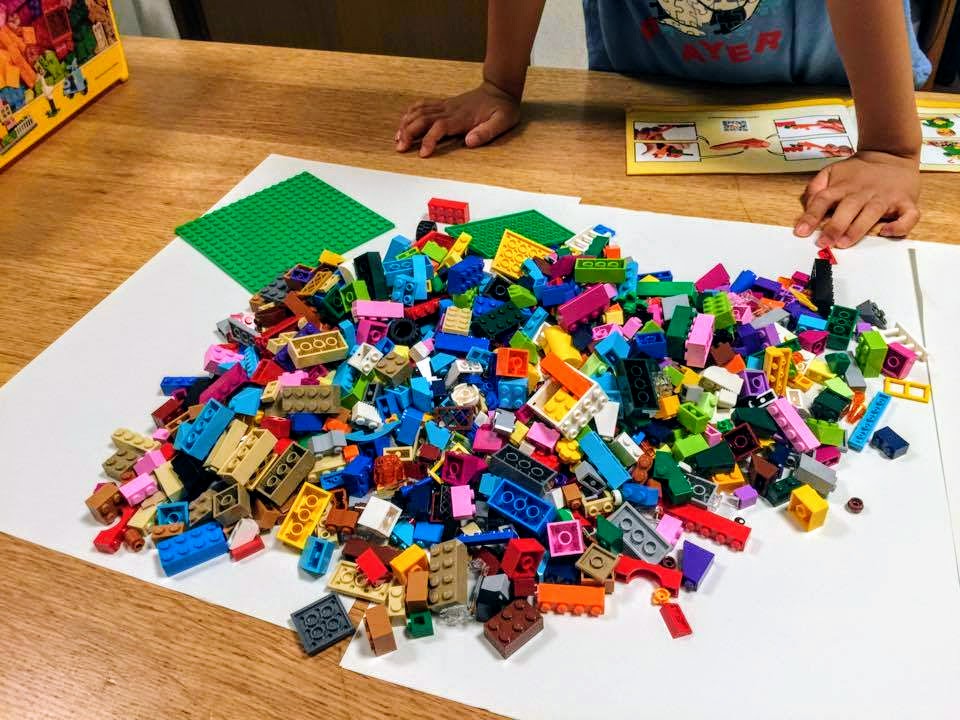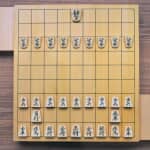Shogi 2 June 2017
Brain Training Games that a Child Can Play by Oneself
Looking at your child playing alone, you might wonder if he/she isn’t good at making friends. In fact, it is said that just because your children play by himself/herself, doesn’t mean he/she has some trouble in making friends. Rather, it is essential for personal growth. Also, for Moms who are busy doing household and child-raising, if your child play alone, you could use spare time effectively.
Even though you can get some free time, children’s playing alone, say playing TV games or something with a smartphone, would make you feel unease. You probably want your child to allot such amount of time for something worthy. I think this is Moms’ true intentions.
So, today I am going to introduce some games, which even little children can play by themselves, and can be brain-trainings. Those are all “analog” things. I do hope children would use not only their brains but also hands with those games to develop their sense deeply.
1. Jigsaw puzzle: with trial and error

The first, I would like to mention about the icon of analog game for brain-trainings, which is Jigsaw puzzles. I love and enjoy them at my house. I think the charm of Jigsaw puzzle is, at any rate, a feeling of accomplishment. Surely, it could stimulate a brain, putting a piece according to an example picture. It’s true, but I think the best of this game is very dramatic moment when you put the very last piece to complete a game. I don’t think this is only for me.
Small children characteristically tend to play again and again, completing a puzzle, disjointing it into pieces, and reassembling it. It might be the case only for a puzzle consisted of not many pieces. (I know, if they destroy a 1000-piece puzzle, we can’t help crying!)Repeating working on the same puzzle with trial and error, children can rapidly become effective to complete it; at first, they pick pieces at random to joint them. The next, they become to choose the piece according to an example, and then begin to put a piece from the edge. Finally, they would put pieces together without looking at the example. These processes of trial and error is also very important for children’s growth
2. Lego: the first step for the creative

A classic play for small children is “Lego” hands down. I assume many parents also played when they were little. Don’t you remember that you made from something unknown to castles, combining colourful rectangular boxes?
The good point of Lego is its simplicity. You only need to combine rectangular boxes, so it is available for very small children. Although you just repeat simple work with Lego, it requires you to have dimensional knowledge. I suppose that Lego could arouse ability of the brain in a different way from that of drawing plane pictures or puzzles in the above Section 1. I said that Lego was just repetition of the same tasks, but it is said “many small make a great.” There are professional “Lego Master Builder” including Japanese, they create amazingly artistic works.
As you know it is not easy to reach the level of Lego Master Builder, but you may sense unlimited creativity in Lego. By the way, LEGOLAND JAPAN that is coming soon in Nagoya Japan, April 2017, has become a hot topic for people. Sounds dreamy and fun!
Almost forgot, you had better to clear up Lego pieces after playing, otherwise you will get scolded by your Mom.
3. Maze: try to reach the goal again and again

I believe the maze is also one of the very popular plays for small children. Personally, I think mazes in which you look for the goal reminds you of reading a map. It could be by chance, but I am bad with direction and often got lost in a maze without reaching the goal.
Perhaps, there might be many children who could reach a goal in a very complicated maze with one try. However, I would recommend playing with a maze to even those who are not good at it, like me, since it would cultivate their motivation to face tough situations. In a maze, you will go on a way you believe, keep going and get stuck. Return to the turning point, start from there, and then get stuck again. This time you will return to the starting point and re-start, repeating that over and over again. Each time, I swore myself to go through it, but it was quite difficult for me to get to the goal and felt unhappy with the results.
However, I have never experienced a maze without a goal! After several tries, without any failure I reached the goal. Even though little children need to have experiences in which they fail in something and recover it to carry it through to the end.
Once you get used to it, you could make a maze by yourself!
4. Sudoku: promote your logical thinking power

Sudoku is a kind of brain training games that is played on a vertical and horizontal 9 squares, 9 x 9 board. It is broken down into nine 3 x 3 squares. Some squares are already with one digits, from 1 to 9. Besides those given digits, you need to put the digits 1 through 9 in each 3 x 3 square, row and column only once. Probably, Sudoku is as popular as the crossword puzzle, which many people enjoy in a train (I am afraid that the population of Sudoku might decrease, since many kinds of applications for cellphones have developed).
Sudoku requires only the knowledge of what digits are. It is quite a simple game, but works very well to promote your logical thinking ability. The difficulties of the game progresses according to the number and the location of empty squares.
Sudoku has several things in common with Shogi: a 9 x 9 board is used for, and small children could solve the problems that are too difficult for adults.
* reference source web page for above cited Sudoku picture: www.sudokugame.org
5. Mate problem: jammed full of good points of Shogi

Mate problem is probably not well known. Besides real games, there are several ways to enjoy Shogi. Mate problem is also one of them. It is an effective practice to improve your Shogi skills. Thinking movements made by two players, “Sente” who plays first and “Gote” who plays second, you will solve a problem alone.
Now I will explain the rule of Mate problem briefly for those who are not familiar with it. The first step is to know that there are two sides in Mate problem: attacker side who check to give checkmates, and King’s side who are checked.
1: Check the king repeatedly.
Attacker side will check repeatedly, and King’s side will deal with the situation at each time: capturing the piece that is checking, running away, or protecting own King with another piece. Check the king and escape from checking again and again.
2: Checkmate with the least movements.
Attacker makes an attempt to checkmate with the least movements, and a King’s side try to prevent from being checkmated, forcing the Attacker side to make the most number of movements.
3: All pieces that are not on a board and not belonged to attacker’s side go to King’s side.
4: Not make any meaningless movements.
“Muda ai” is a Shogi terminology in Japanese that refers to meaningless interposing move. This moved piece can be simply captured by the attacking piece and makes no differences. The number of attacker’s movements would increase, but it wouldn’t the best and most escaping movements. So, you need to pay attention not to make “Muda ai.”
Moreover, I would like to tell about three situations, mate-in-1, in-3, and in-5: situation where the king will be checkmated in one next move, in three moves, and in five moves. You may start from mate-in-1 and raise your level.
I am afraid that you might be puzzled with my explanation and think that Mate problem is a difficult problem. However, originally you need only to know how to move each piece for Mate problem, but not to have specific technique. Especially mate-in-1 is very easy, and a child of our staff enjoyed it by herself.
The explanation for Mate problem is a bit too long, isn’t it? Mate problem could be a condensation of things that you can achieve through an ordinal game. For example, thinking power or foresight. The highlight of Mate problem is in this point. Solving a mate problem, you need to think both attacker’s and receiver’s side. Doing so, you would promote your ability to move pieces in your mind. A feeling of accomplishment that you will have when you checkmate finally is exceptional! Longtime effort will be paid off when you finally get to the answer. The more you make efforts, the more satisfied you can be. I would say it is not only the case for children’s brains, but for their mental growth. Mate problem is a practice that is aimed for checkmating and is jammed with many good points of Shogi.
In this article, I introduced some brain training analog games. How do they appeal to you? If you found something interest, I am very happy!
We also offer a content named “Let’s play a Shogi puzzle every day!” which small children can enjoy by themselves. Please have a look!



